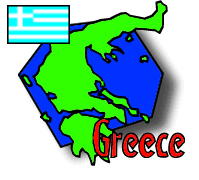Person of the Day: Katerina Mourla ![]()
Place of the Day: Acropolis of Athens
Group Dispatch, March 13-14

Questions? Ask Ethan ![]() !
!
Return to Fast Facts
 |
 |
 |
 |
 |
|
Itinerary/ Journal |
Discussions |
About Greece |
eDscape Projects |
Scrapbook |
|
|
|
|
|
|
|
Copyright 1997-99 BikeAbout. All rights reserved.

